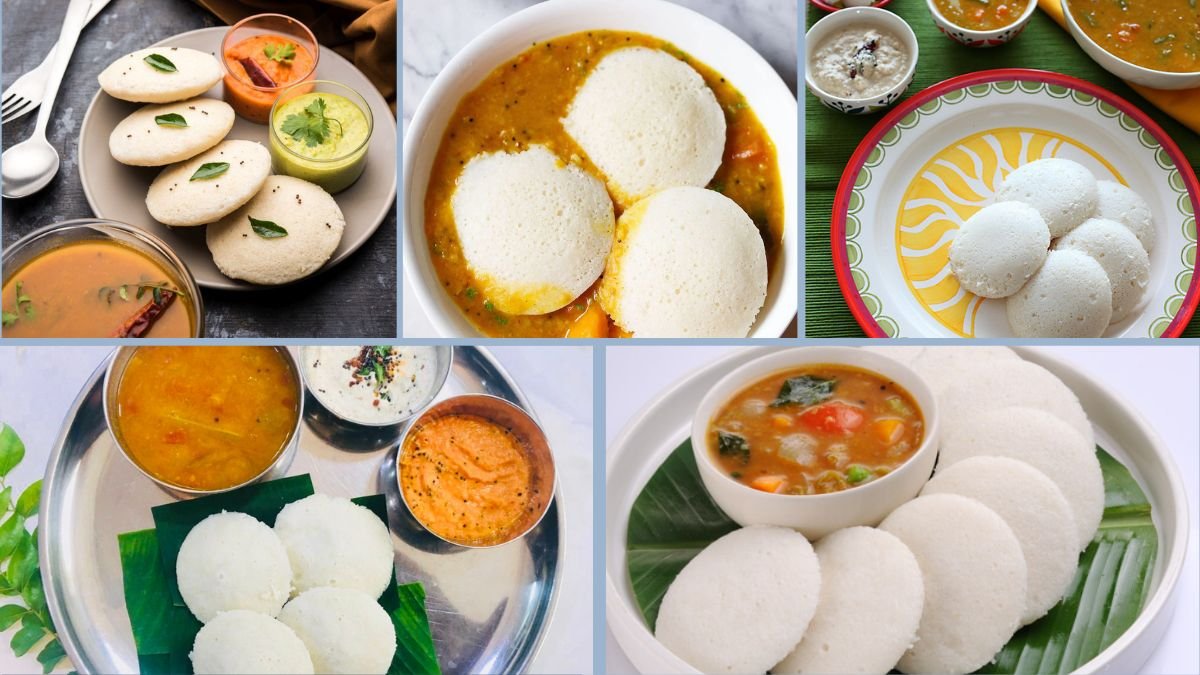Idli-Sambar is one of the most iconic South Indian dishes, loved across India and abroad for its balance of taste, nutrition, and ease of digestion. This wholesome combo brings together soft, steamed rice-lentil cakes (idlis) and a tangy, spiced lentil-based vegetable stew (sambar). It is light yet filling, making it an excellent choice for weekend brunch when families gather for an unhurried, nourishing meal. This article explains a detailed five-step method to prepare the perfect Idli-Sambar combo at home, highlighting ingredients, cooking techniques, nutritional aspects, and serving ideas—all while remaining purely vegetarian.
Introduction
Indian regional cuisines offer a vast variety of dishes that reflect cultural diversity and nutritional wisdom. Among them, Idli-Sambar holds a special place as a comfort food that is not only delicious but also exceptionally healthy. Originating from South India, it has now become a pan-Indian favorite, served everywhere from five-star hotels to roadside eateries.
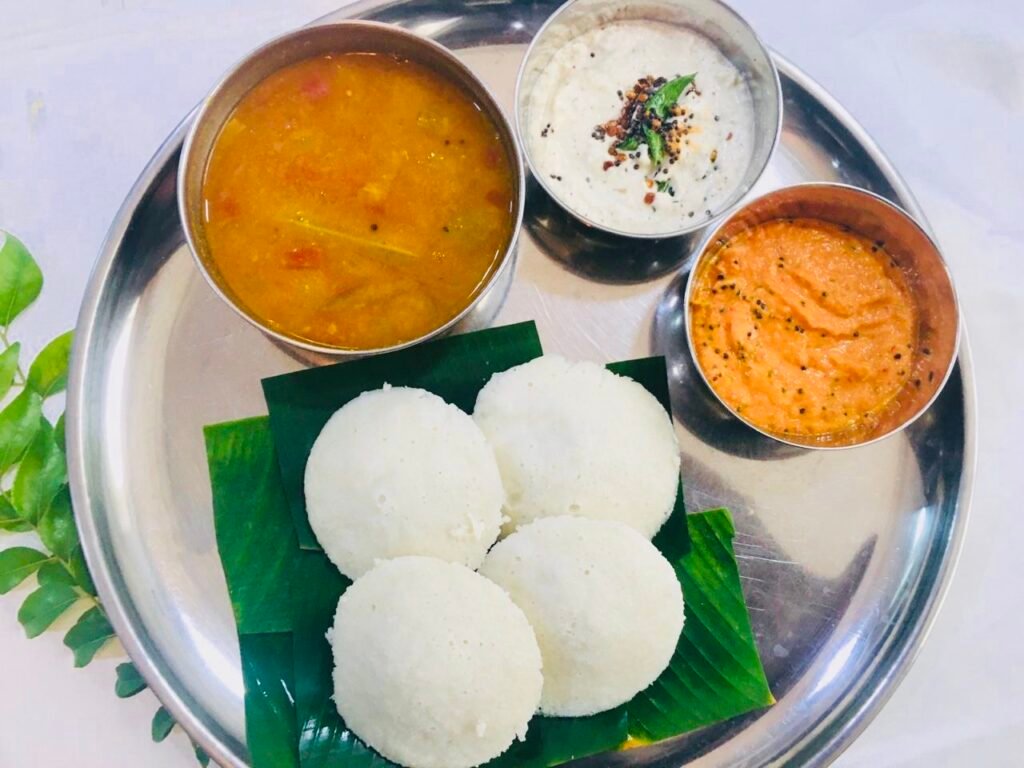
Idli is prepared by steaming a fermented batter of rice and urad dal (black gram), resulting in a fluffy, soft, and spongy delicacy. Sambar, on the other hand, is a tangy and mildly spiced stew made with toor dal (pigeon peas), tamarind, and seasonal vegetables. Together, they make a meal that is high in protein, gut-friendly, and naturally gluten-free.
The following sections outline a five-step process to prepare this classic brunch dish in a fuss-free manner.
Ingredients
For Idlis (Serves 4–5)
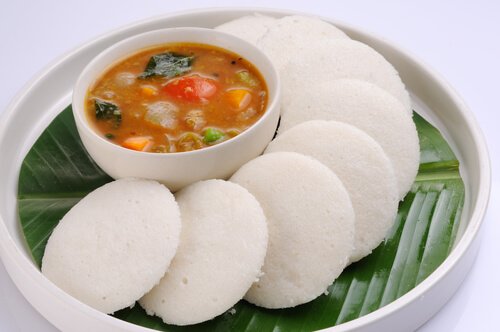
- Raw rice (idli rice preferred): 2 cups
- Urad dal (split black gram, skinless): 1 cup
- Fenugreek seeds: 1 teaspoon
- Salt: to taste
- Water: as required
For Sambar (Serves 4–5)
- Toor dal (pigeon peas): 1 cup
- Tamarind pulp: 2 tablespoons (soaked and extracted)
- Drumsticks (vegetable): 1, cut into 2-inch pieces
- Brinjal: 2 small, diced
- Carrot: 1 medium, chopped
- Tomato: 2 medium, chopped
- Curry leaves: 8–10
- Mustard seeds: 1 teaspoon
- Methi (fenugreek seeds): ¼ teaspoon
- Dry red chilies: 2
- Turmeric powder: ½ teaspoon
- Sambar powder: 2 tablespoons
- Oil: 2 tablespoons (preferably sesame oil)
- Salt: to taste
- Fresh coriander leaves: 2 tablespoons, chopped
Step 1: Preparing the Idli Batter
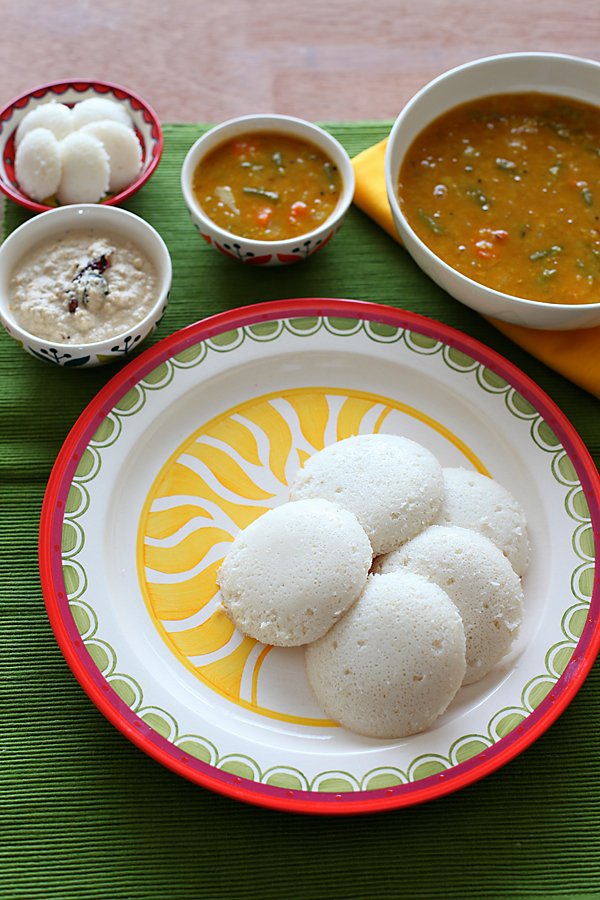
- Wash and soak the rice, urad dal, and fenugreek seeds separately for 6–8 hours.
- Grind urad dal with water until smooth and fluffy. Then grind rice into a slightly coarse paste.
- Mix both batters, add salt, and allow to ferment overnight (8–10 hours) in a warm place. The batter should double in volume and have a slightly sour aroma.
- Before steaming, gently stir the batter to even out the consistency without overmixing.
Step 2: Steaming Perfect Idlis
- Grease idli molds lightly with oil.
- Pour ladlefuls of batter into the molds, filling them about three-fourths full.
- Steam in an idli steamer or pressure cooker (without the whistle) for 10–12 minutes.
- Check doneness by inserting a toothpick—it should come out clean.
- Let the idlis cool for 2–3 minutes before scooping them out with a spoon.
Step 3: Cooking the Dal for Sambar
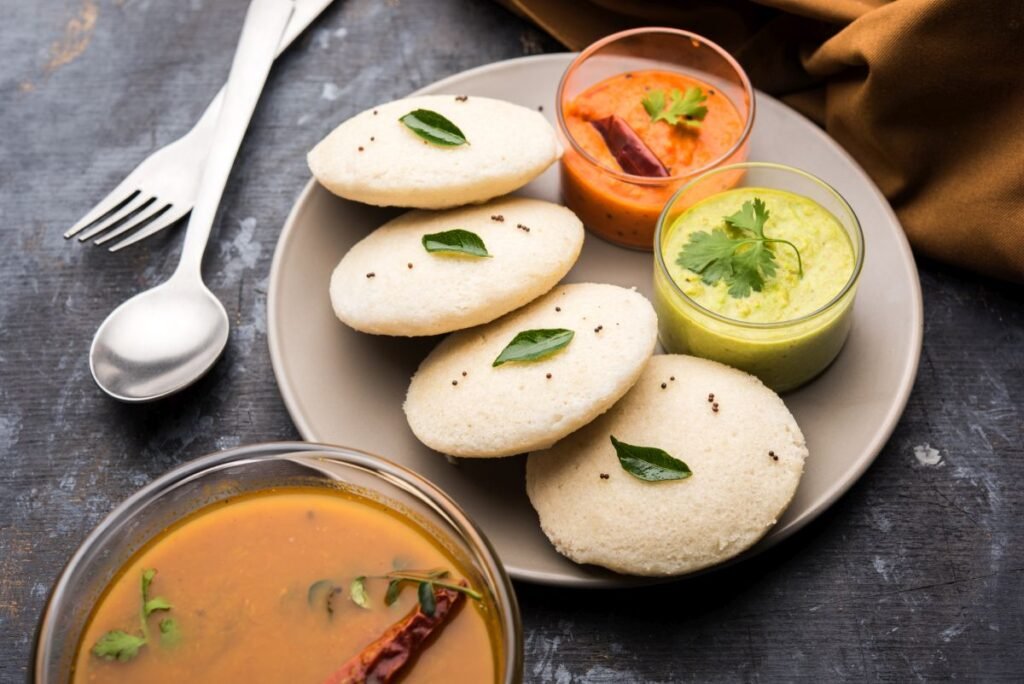
- Wash toor dal and pressure cook with 3 cups of water, turmeric, and a pinch of oil until soft (about 3–4 whistles).
- Once cooled slightly, mash the dal with the back of a spoon for a creamy texture.
- Keep aside while preparing the vegetable base.
Step 4: Preparing the Sambar Base
- Heat oil in a deep pan. Add mustard seeds, methi seeds, dry red chilies, and curry leaves. Allow them to splutter.
- Add chopped tomatoes and cook until soft.
- Add drumsticks, brinjal, and carrot with a little water; cover and cook until vegetables are tender.
- Add tamarind pulp, sambar powder, and salt. Stir well.
- Now, add the mashed dal and adjust the consistency with water. Let the sambar simmer for 10–15 minutes until the flavors blend beautifully.
- Garnish with fresh coriander before serving.
Step 5: Serving the Idli-Sambar Combo
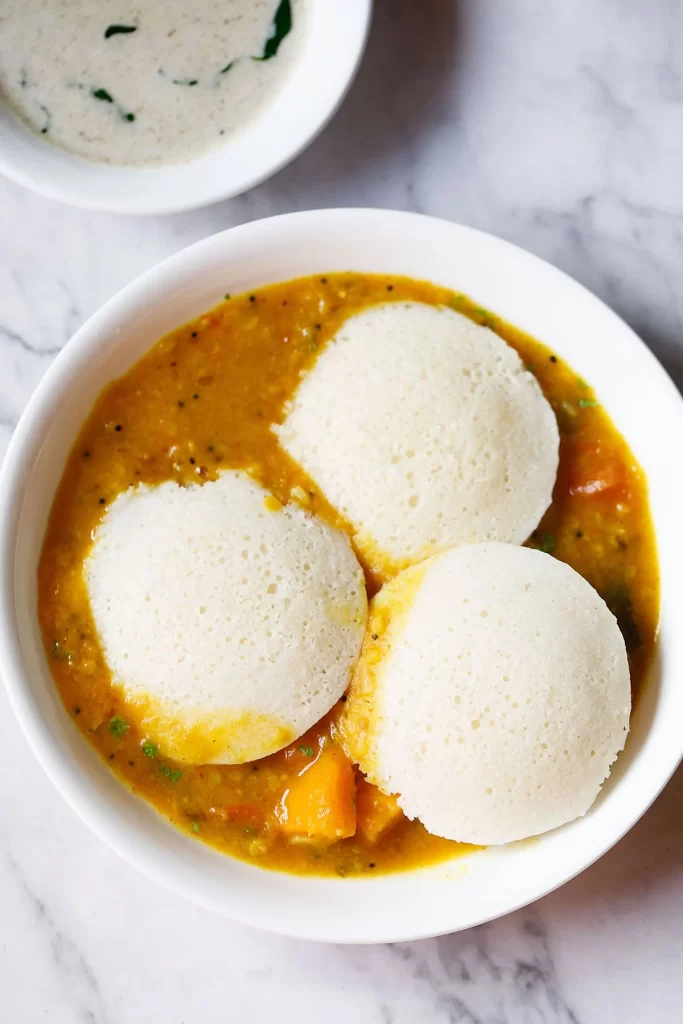
- Place warm, fluffy idlis on a plate and serve with a generous bowl of steaming hot sambar.
- Accompany with coconut chutney (made from grated coconut, green chilies, and roasted chana dal) for an authentic touch.
- For a brunch-friendly variation, drizzle ghee over the idlis and serve alongside filter coffee or masala chai.
Nutritional Benefits
- Protein-Rich: Urad dal in idli and toor dal in sambar provide complete plant-based protein.
- Fermentation Advantage: Fermented batter enhances gut health and aids digestion.
- Low Fat & Steamed: Idlis are steamed rather than fried, making them light and easy to digest.
- Micronutrients: Vegetables in sambar contribute vitamins, minerals, and fiber.
- Balanced Meal: Combining idli and sambar offers carbs, protein, and micronutrients in one meal.
Variations
- Rava Idli: Replace rice batter with semolina (rava) for instant idlis without fermentation.
- Vegetable Sambar: Use seasonal vegetables such as pumpkin, okra, or radish for variety.
- Mini Idlis: Prepare bite-sized idlis and serve them dunked in hot sambar as “sambar idli.”
- Millet Idlis: Replace rice with foxtail millet or barnyard millet for a healthier twist.
Conclusion
Idli-Sambar is more than just a South Indian classic; it is a complete meal rooted in tradition yet highly adaptable to modern lifestyles. By following five simple steps—preparing the batter, steaming idlis, cooking dal, making the sambar base, and serving thoughtfully—you can bring this beloved brunch dish to your table.
Ideal for leisurely weekends, the Idli-Sambar combo offers the perfect balance of taste, nutrition, and cultural heritage. Its versatility and health benefits ensure it remains a timeless favorite across generations and geographies.
In a world that increasingly values wholesome, plant-based meals, Idli-Sambar stands out as a shining example of food that nourishes both the body and the soul.
